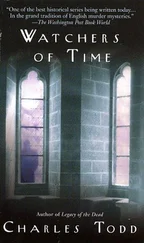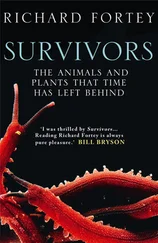Alexander Todd - A Time to Remember
Здесь есть возможность читать онлайн «Alexander Todd - A Time to Remember» весь текст электронной книги совершенно бесплатно (целиком полную версию без сокращений). В некоторых случаях можно слушать аудио, скачать через торрент в формате fb2 и присутствует краткое содержание. Город: Cambridge, Год выпуска: 1983, ISBN: 1983, Издательство: Cambridge University Press, Жанр: Химия, Биографии и Мемуары, на английском языке. Описание произведения, (предисловие) а так же отзывы посетителей доступны на портале библиотеки ЛибКат.
- Название:A Time to Remember
- Автор:
- Издательство:Cambridge University Press
- Жанр:
- Год:1983
- Город:Cambridge
- ISBN:0 521 25593 7
- Рейтинг книги:3 / 5. Голосов: 1
-
Избранное:Добавить в избранное
- Отзывы:
-
Ваша оценка:
- 60
- 1
- 2
- 3
- 4
- 5
A Time to Remember: краткое содержание, описание и аннотация
Предлагаем к чтению аннотацию, описание, краткое содержание или предисловие (зависит от того, что написал сам автор книги «A Time to Remember»). Если вы не нашли необходимую информацию о книге — напишите в комментариях, мы постараемся отыскать её.
A Time to Remember — читать онлайн бесплатно полную книгу (весь текст) целиком
Ниже представлен текст книги, разбитый по страницам. Система сохранения места последней прочитанной страницы, позволяет с удобством читать онлайн бесплатно книгу «A Time to Remember», без необходимости каждый раз заново искать на чём Вы остановились. Поставьте закладку, и сможете в любой момент перейти на страницу, на которой закончили чтение.
Интервал:
Закладка:
When I saw the Watson-Crick model that day in their laboratory, I at once recognised that, by a brilliant imaginative jump, they had not only solved the basic problem of a self-replicating molecule, but had thereby opened the way to a new world in genetics. Maybe it is a pity that the physicists and the chemists were not closer at that time, but, even if they had been, we might at best have enabled the physicists to make the imaginative jump a year or so earlier, but probably not much more. Arising from our synthetic studies on simple nucleotides, I had long since learned that the nucleosides were effectively flat, and their stereochemistry indicated that, linked together by phosphate residues, they must form some kind of helical structure. We also knew, from X-ray studies of some of our materials by W. Cochrane and his group, that nucleosides and, indeed, their parent pyrimidines and purines were strongly hydrogen bonded. I recall telling Astbury of these views as early as 1947. I knew, of course, that the DNA molecule must contain some kind of code if it were to transmit hereditary characteristics, but, save in a very desultory way, I never considered the matter very seriously. Thus, although well aware of Chargaff's analytical findings in 1950 and 1951, I never gave any serious thought to their possible significance as part of a physical arrangement of DNA which could provide the basis of the genetic code. All of which is just an illustration of the way in which scientists are very often blind to matters which happen to lie outside their own specific field of interest. A further striking example of this last point is to be found in our work on organic phosphates, a facet of our nucleotide coenzyme studies. One of the problems we had to face quite early in our work aimed at coenzymes, most of which were unsymmetrical pyro- or triphosphates, was that the initial phosphorylation of a nucleoside by our normal method (using dibenzyl phosphorochloridate) gave rise to a triester, from which one esterifying group had to be selectively removed under very mild conditions which would not damage other parts of the molecule. One of our most successful devices for this purpose was to make use of (a) the electrophilic character of the CH2-grouping in the benzyl residue and (b) the fact that diesters of phosphoric acid are strong acids, i.e. they have very stable anions. Thus, when a triester of phosphoric acid containing a benzyl (or, for that matter, an allyl) group is treated with a nucleophile such as a tertiary base, or an anion such as chloride or iodide, the nucleophile attaches itself to the benzyl or allyl group liberating the anion of a diester of phosphoric acid. The more powerful the nucleophile and the stronger the diester of phosphoric acid produced in the reaction the better it goes. Now, of course, ethylenic compounds are nucleophilic, but rather weakly so, and accordingly were not of any value to us in the nucleotide work. But, around 1952, my colleague, F. R. Atherton (now with Roche Products Ltd and one of the world's experts on organic phosphates) decided to explore their use in this reaction. In the course of his work he found that geranyl diethyl phosphate was quite stable, but geranyl diphenyl phosphate was unstable and underwent cyclisation to give a mixture of cyclic terpenes, diphenyl phosphoric acid (a very strong acid) being expelled. What had happened was, of course, that the isolated double bond in the geranyl residue was sufficiently nucleophilic to attack the allylic carbon intramolecularly. This was quite interesting, and was in accord with expectations. What we failed to realise was that he had, in fact, discovered the way in which nature makes carbon-carbon bonds! Our interest lay in the behaviour of the phosphate - not the geranyl residue. During the 1950s there was an increasing interest in the mechanism by which nature synthesises compounds like terpenoids and steroids containing recurring 'isoprene units' in their carbon skeleton, starting from acetate. The discovery of mevalonic acid as an intermediate by Karl Folkers and his group in 1956 gave a big fillip to research in this area, and several of my friends -J. W. Cornforth and G. Popjak in England, Konrad Bloch in the United States and Feodor Lynen in Germany - were deeply involved. I paid no more than passing attention to this field, being absorbed in nucleotide coenzyme studies as well as work on vitamin B12 and aphid colouring matters. In August 1958, however, I went on holiday to Lugano with my family and one sunny morning, having just swum in the lake, I was sitting on the hotel terrace with my wife having a Campari when a somewhat decrepit car drew up close by and much to our astonishment the Bloch family emerged from it. Greetings having been exchanged, they joined us on the terrace for a gossip. While thus engaged Konrad said he thought it might interest me to know that there appeared to be a phosphate group in the precursor of the terpenes, which was produced in nature from mevalonic acid. I said to Konrad 'I'm not surprised, but I would bet that the intermediate will be a pyrophosphate' and left the matter at that. It was only later that I remembered Atherton's work, and realised that it really held the key to the problem. Subsequently, of course, the intermediate was identified as iso-pentenyl pyrophosphate and this led to the beautiful work on terpenoid and steroid biosynthesis carried out by Bloch, Cornforth and Popjak and by Lynen.
I suppose the main reason for my decision to leave the main brunt of work on polynucleotide synthesis and sequence determination to others was that I was still much involved in coenzyme synthesis, and in the development and refinement of procedures for polyphosphorylation which were a prerequisite for it. Furthermore, I was engaged on structural studies on vitamin B12 and in addition to a number of other smaller efforts I was already getting deeply involved in the fascinating problems presented by the remarkable colouring matters present in the haemolymph of aphids. Even although I had for those days a very large research school, there were limitations to what I could tackle!
Following our synthesis of adenosine triphosphate (ATP) our next major triumph in the coenzyme field was the synthesis of flavin-adenine-dinucleotide (FAD) published with G. W. Kenner and S. M. H. Christie in 1952. In the years that followed a variety of other compounds of this type were synthesised including inter alia cozymase (nicotinamide-adenine-dinucleotide) and uridine-diphosphate-glucose. It was, indeed, for my work on phosphorylation and nucleotide coenzymes that I received the Nobel Prize for chemistry in 1957.
Ever since my early work on vitamin B1 in Edinburgh, I retained an interest in the B group of water-soluble vitamins, and did indeed carry out work on some of them in Manchester. One of the most intriguing features of the group was its association with the anaemias. The picture was very confused, and it was not until the 1940s that it became clear that, although such members of the B group as folic acid were involved in nutritional anaemias, the factor involved in pernicious anaemia - the 'external factor' present in liver extracts - was still unisolated. I had not myself taken much interest in pernicious anaemia, and had confined my interest largely to the B vitamins involved in nutritional macrocytic anaemias, but my attention had been drawn to the problem by H. D. Dakin, when I visited him at his home near New York on my way to Pasadena with my wife in 1938. Dakin had been interested in the problem ever since Minot and Murphy in 1926 had shown that whole liver would cure pernicious anaemia, and he had been trying to isolate the material responsible from liver extracts. He had, however, like other workers, made very slow progress indeed since the only way one could test the material was on human patients. Such a test was bound to be inaccurate, but what was (from Dakin's point of view) worse, was that clear cut cases of pernicious anaemia were none too common and clinicians, not unnaturally perhaps, were more interested in curing their patients than in testing Dakin's extracts. When I returned to England I remember discussing the matter with the research group at Glaxo Laboratories Ltd; one of their number, E. Lester Smith, was determined to go ahead on liver extract, and we encouraged him to do so. He slogged on despite every kind of discouragement encountered in the course of testing on human patients and eventually, in 1948, only a very short time after Folkers and his group at the Merck Laboratories in the United States, he did indeed isolate the anti-pernicious anaemia factor Vitamin B12. These two nearly simultaneous isolations of the vitamin were quite independent of one another; but it is remarkable that they should have been so close, when we know that the American group were able to use a microbiological test, while Lester Smith had to go all the way with the much more difficult clinical test procedure. Since I had been associated with the Glaxo isolation work throughout its course, it was perhaps not surprising that I should have been asked if I would undertake a chemical study of it, while Dorothy Hodgkin studied the vitamin by the X-ray method. This I agreed to do, and with my friend and colleague A. W. Johnson we started work. It proved extremely difficult; for one thing we had, during the first year or two of our studies, extremely small amounts of vitamin available to us, and, even more importantly, the molecule proved to be one of almost fantastic complexity. We were able to settle some of its features and learn something about the central part of the molecule by hydrolytic and oxidative studies, but our major contribution lay, perhaps, in the fact that some of our degradation products materially helped Dorothy Hodgkin in her X-ray studies, which in 1955 finally gave the complete vitamin structure. Subsequently, with V. M. Clark, I carried out quite a bit of work on methods which might be applicable to the synthesis of the vitamin, but dropped them, partly because a total synthesis using them would have absorbed a greater part of our research effort than we wished to devote to it, and partly because R. B. Woodward, who had also taken up the synthesis, appeared to me to have a method more likely to succeed (as indeed, with the cooperation of Albert Eschenmoser and his group at Zurich, it ultimately did). A third major topic of research extending over more than twenty years in Cambridge concerned the colouring matters present in the haemolymph of insects belonging to the family Aphididae. My reasons for becoming involved in work on aphid pigments are rather interesting. When I was in Oxford with Robinson I did some work on the colouring matters present in the mycelia of some plant pathogenic fungi of the Helminthosporium group. These colouring matters were derivatives of anthraquinone, and, out of curiosity, I went through the literature and listed all the anthraquinones known to occur in nature together with their source and the pattern of substitution in them. It appeared to me that they seemed to fall very roughly into two groups according to their nuclear substitution - those from higher plants on the one hand, and those from fungi on the other. There were, however, two odd ones obtained from insects - carminic acid from cochineal, and kermesic acid from the oak chermes - which seemed to resemble the fungal anthraquinones rather than those from higher plants. This might not seem very remarkable, but I recalled that these insects belonged to the family Coccididae whose members are known to contain symbiotic fungi located in special cells called mycetomes. Accordingly, I found myself wondering whether it was the insect or the symbiotic fungi that produced the anthraquinone pigments, and I decided I would look into this when I had some time and opportunity. While in Edinburgh I tried to pursue the matter further. It was, of course, necessary for me to obtain supplies of living cochineal insects since examination of the cochineal of commerce would teach me nothing. I soon found, however, that the authorities were not at all enthusiastic about my importing the insects, and the project went into cold storage until 1939. In the early summer of that year, I drove with my wife and some friends from Manchester to Lake Bala in north Wales for a day's outing and we picnicked by the lake hard by a sizeable stand of foxgloves. As I lay dozing after lunch looking up at the foxgloves, I noticed that one of them had a heavy infestation of black aphids on one of the flower heads; and, I thought, ' aphids are zoologically very close to the coccids - perhaps they too have anthraquinones'. So I took a few aphids and rubbed them between my fingers; sure enough, my fingers were stained. But, oddly, the stain was at first yellowish and then after a short time became red (which was the colour expected of an anthraquinone). So I cut the whole head off the infected foxglove, took it back to Manchester, and had a look at the aphids. It was soon clear that the colouring matter in them was not an anthraquinone, and I confirmed the fact that the coloured substance in the insects did undergo a curious change of colour from a kind of khaki to red within a very short time of its extraction. I also went to the entomological literature and found that the Aphididae like the Coccididae contained symbiotic fungi. I decided there and then, that I would leave the Coccididae alone and look at the Aphididae to satisfy my curiosity both as to the nature of their colouring matters and their true origin, i.e. from insect or fungus. But I had to wait until the early summer of 1940 for the next aphid season; by then the war had started in earnest, and I had to put the matter to one side. I resolved to take it up again when the war was over, and so indeed I did.
Читать дальшеИнтервал:
Закладка:
Похожие книги на «A Time to Remember»
Представляем Вашему вниманию похожие книги на «A Time to Remember» списком для выбора. Мы отобрали схожую по названию и смыслу литературу в надежде предоставить читателям больше вариантов отыскать новые, интересные, ещё непрочитанные произведения.
Обсуждение, отзывы о книге «A Time to Remember» и просто собственные мнения читателей. Оставьте ваши комментарии, напишите, что Вы думаете о произведении, его смысле или главных героях. Укажите что конкретно понравилось, а что нет, и почему Вы так считаете.










